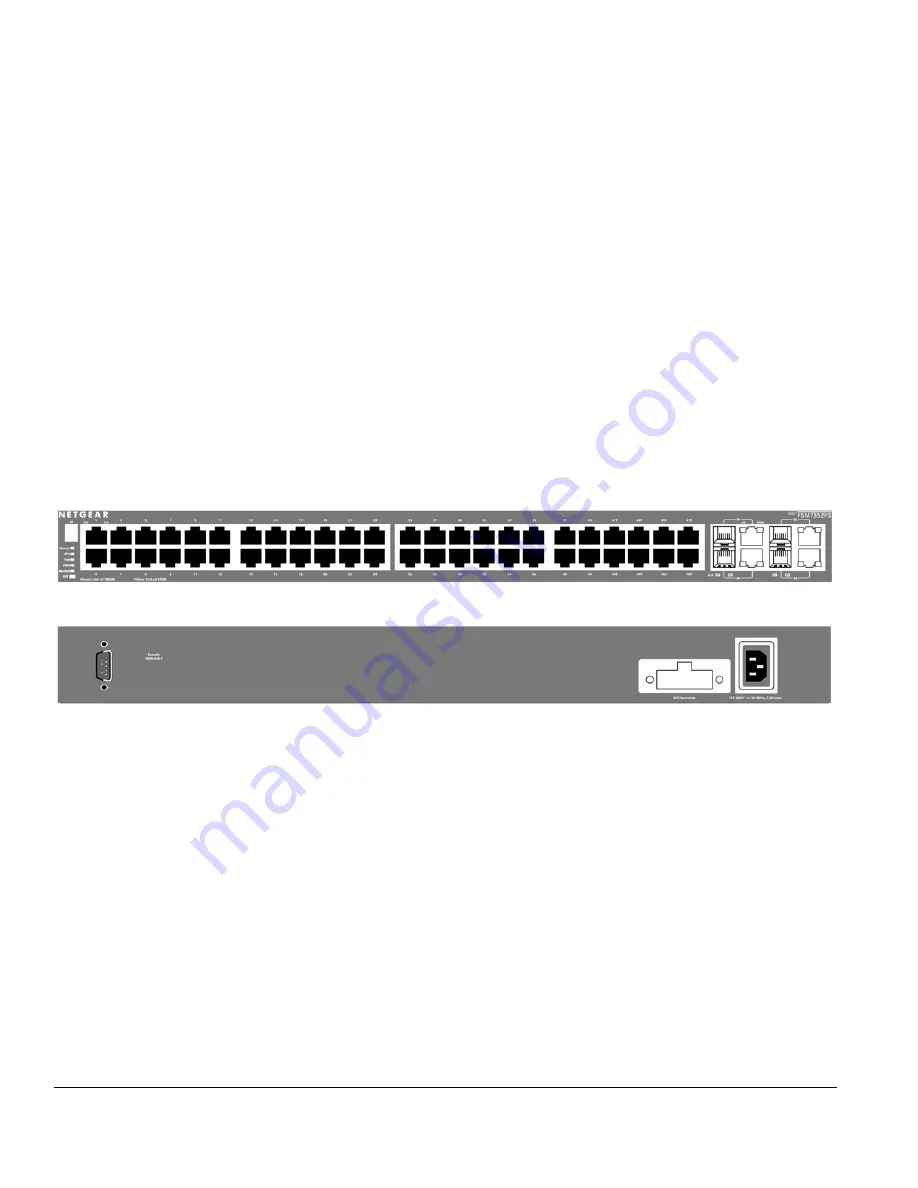
Page 9 of 24
CHAPTER 2: PHYSICAL DESCRIPTION
This chapter describes the hardware features of the NETGEAR Model FSM7352PS ProSafe 48+4 Fast
Ethernet L3 Managed Stackable Switch with PoE. Topics include:
Front and back panels
48 10/100 Mbps and 4 10/100/1000 Mbps auto-sensing RJ-45 ports
SFP module ports
LED descriptions
Console port
Front and Back Panels
Figures 2-1 and 2-2 show the key components on the front and back panels of the NETGEAR Model
FSM7352PS ProSafe 48+4 Fast Ethernet L3 Managed Stackable Switch with PoE
The front panel contains LEDs, RJ-45 jacks, SFP module bays, and a console port. The back panel has a
standard AC power receptacle for accommodating the supplied power cord.
Figure 2-1. Front Panel of the FSM7352PS ProSafe 48+4 Fast Ethernet L3 Managed Stackable Switch with PoE
Figure 2-2. Back Panel of the FSM7352PS ProSafe 48+4 Fast Ethernet L3 Managed Stackable Switch with PoE
10/100/1000 Mbps RJ-45 Ports
As Figures 2-1 and 2-3 shows, the FSM7352PS ProSafe 48+4 Fast Ethernet L3 Managed Stackable
Switch with PoE has 48 10/100 Mbps and 4 10/100/1000 Mbps RJ-45 combo ports. These 4 ports are
auto-sensing 10/100/1000 Mbps ports: When you insert a cable into an RJ-45 port, the switch automatically
ascertains the maximum speed (10, 100, or 1000 Mbps) and duplex mode (half- or full-duplex) of the
attached device.
To simplify the procedure for attaching devices, all RJ-45 ports support Auto Uplink. This technology lets
you attach devices to the RJ-45 ports using either straight-through or crossover cables. When you insert a
cable into the switch’s RJ-45 port, the switch automatically:
•
Senses whether the cable is a straight-through or crossover cable.
•
Determines whether the link to the attached device requires a “normal” connection (such as when
connecting the port to a PC) or an “uplink” connection (such as when connecting the port to a
router, switch, or hub).
























